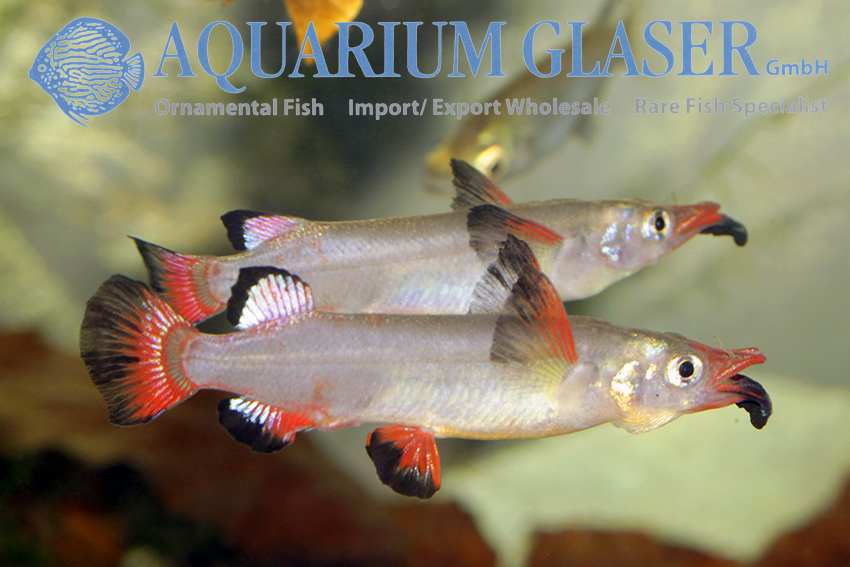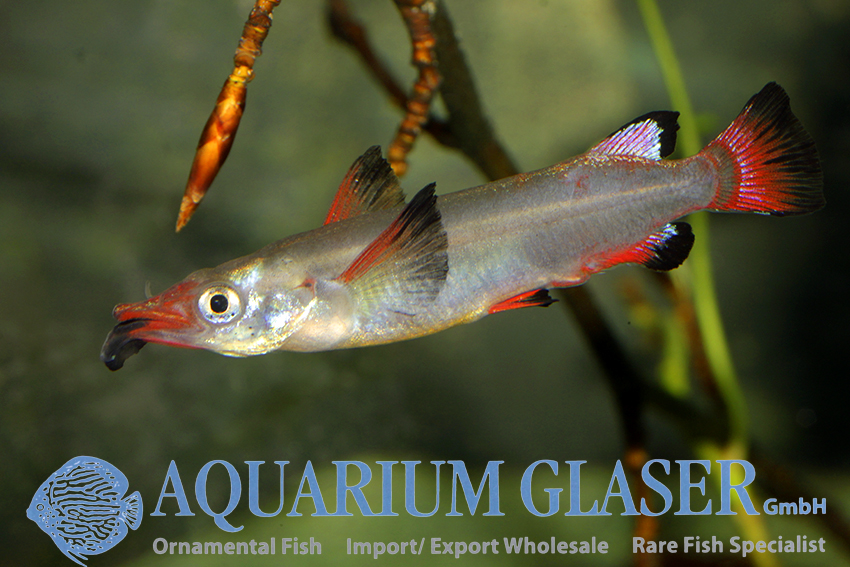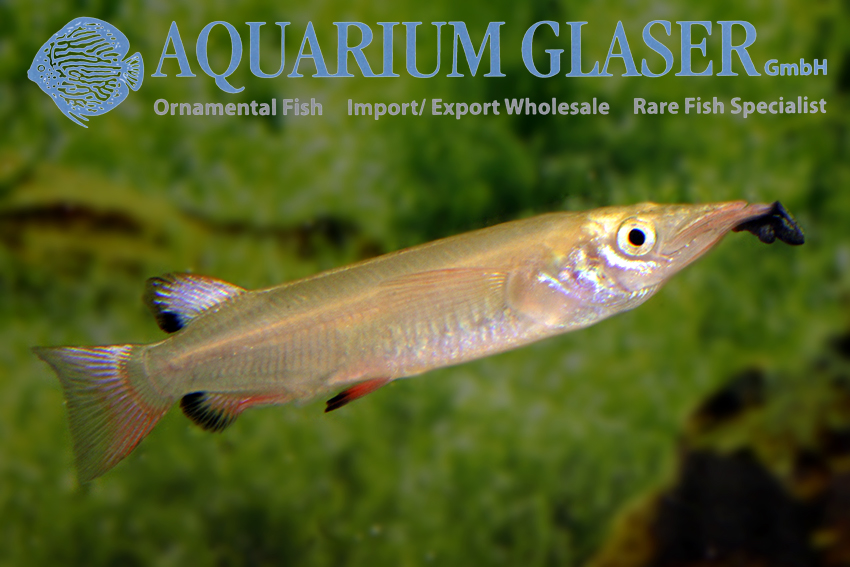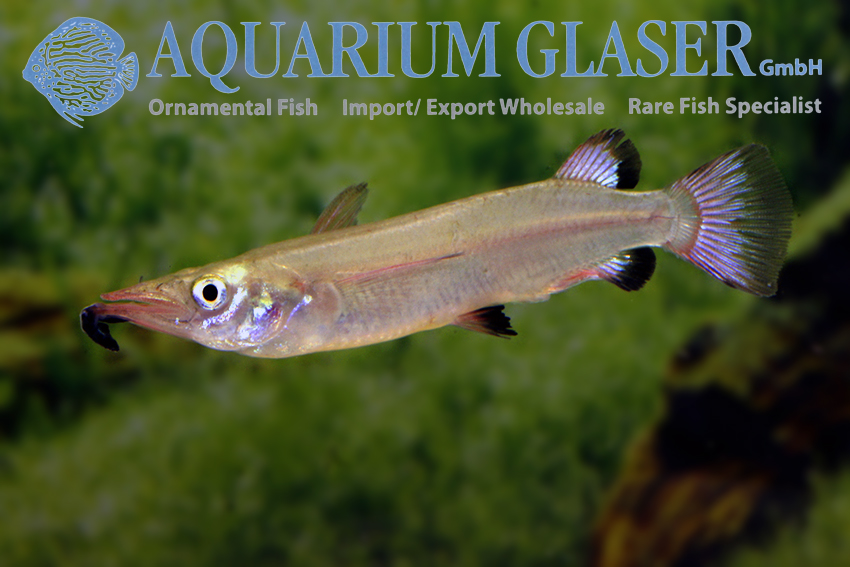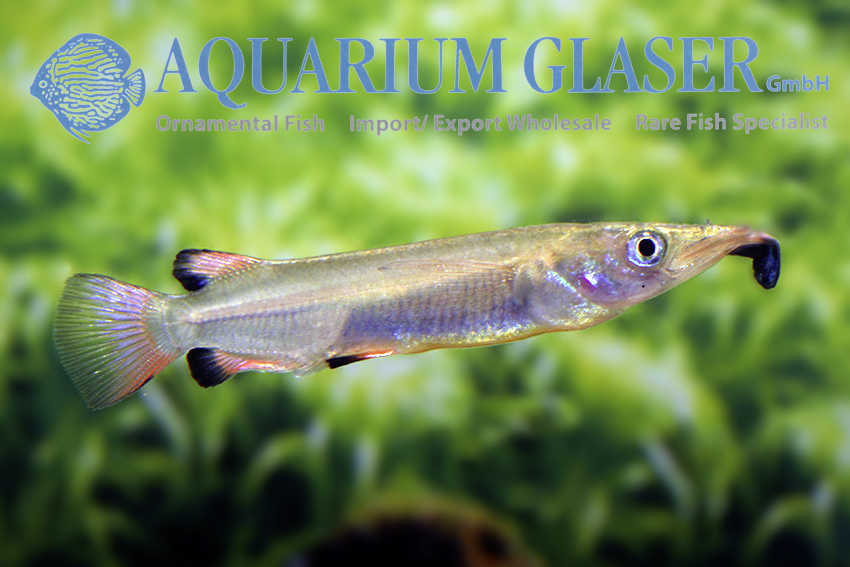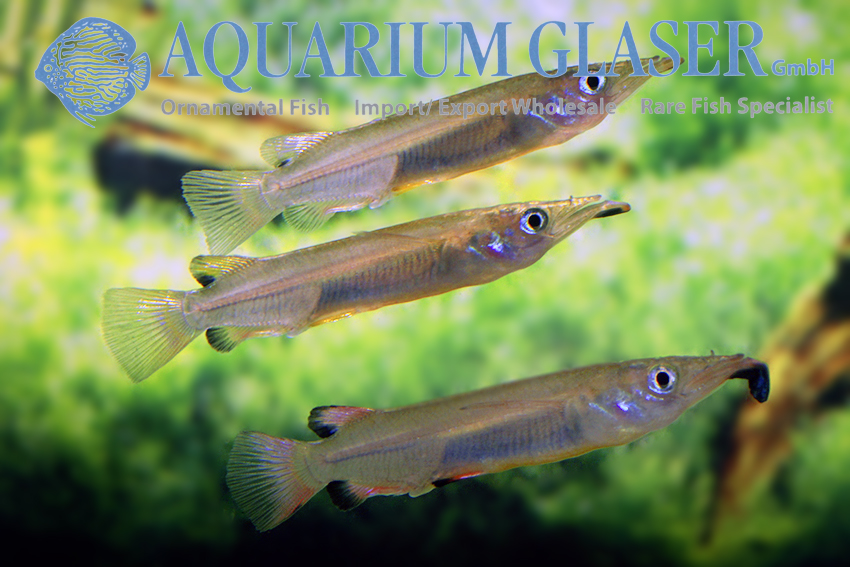This wonderfully coloured halfbeak originates from the island of Sulawesi ( = Celebes) where it occurs in the southern half; it is endemic in the Maros highlands. In contrast to the closely related genus Dermogenys the upper and the lower jaw are approximately equally long (thus the generic name). In some species, however, is seems not so clear whether they belong to Dermogenys or to Nomorhamphus.
There are two described subspecies of Nomorhamus liemi, eg N. liemi liemi with black fins and N. l. snijdersi with red fins. In wild collected specimens all intermediate states can be found, so currently no subspecies of N. liemi are accepted scientifically. However, in the hobby specimens with a very high amount of red coloration are still called „snijdersi“.
An interesting feature in N. liemi is the fleshy hook many specimens develope on the lower jaw. It is not known what it is good for.
In the wild, N. liemi mainly inhabits brooks and the fish like a comparatively strong current in the aquarium. They are livebearing fishes, the females can give birth every 4 to 6 weeks. The young are very big, sometimes even 2.5 cm long! The mothers hunt their babies quite fiercely. Breeding will be only successful if the adults are properly fed; live insects (crickets, flies, buffalo-worms etc.) are an important part of the diet.
The water temperatures should be relative low (20 – 24°C), the pH higher than 7. Males are very aggressive against each other. Other tankmates are usually ignored.
For our customers: the fish have code 438833 on our stocklist. Please note that we exclusively supply the wholesale trade.
Lexicon: Nomorhamphus: from ancient Greek, means “with regular jaws”; this refers to the almost equally long upper and lower jaw, which is the difference to all other halfbeaks. liemi: dedication name. snijdersi: dedication name.
Text & photos: Frank Schäfer





